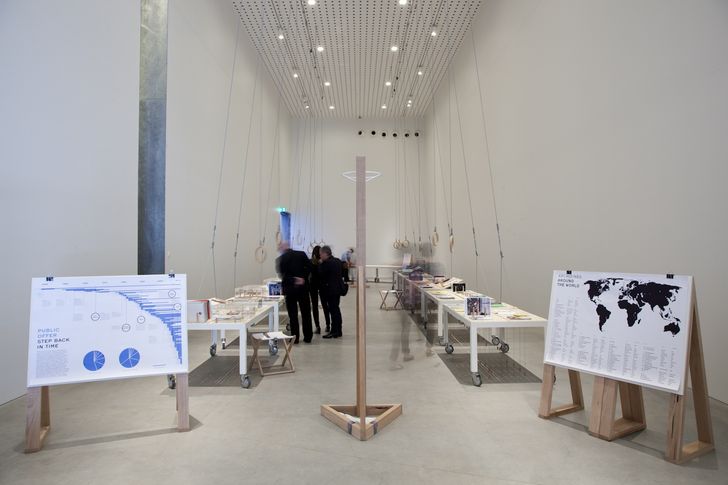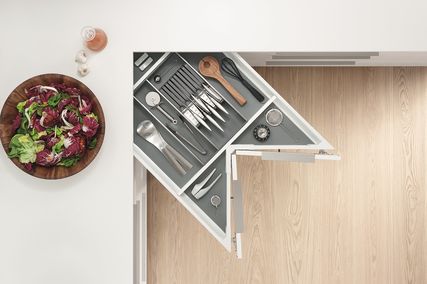Journals and magazines are powerful agents in the story of architecture. Professor Beatriz Colomina, who has written extensively on the interrelationships of architecture and the media, suggests that perhaps architecture is produced within its own media representation. The travelling exhibition Clip/Stamp/Fold: The Radical Architecture of Little Magazines 196X–197X was co-curated by Colomina and her graduate students, and began its journey in New York in 2006. It explored some of the magazines with significant roles in an era of avant-garde architecture, and is today available as a hardcover publication.
Like Clip/Stamp/Fold, the first set of exhibitions to launch Melbourne’s RMIT University Design Hub Gallery also explores the role that media plays in design culture. Public Offer, co-curated by Kate Rhodes (former editor of Artichoke) and Timothy Moore (former editor of Architecture Australia), is all about local design publications (including Architecture Australia, Houses and Artichoke), and is being held alongside Archizines, a travelling exhibition of international titles curated by Elias Redstone.
Archizines is set up on one side of the exhibition space, with Public Offer on the other, such that a viewer might wander along one side and then the other, or just meander a route between the two. This sets up a conversation between what has been happening in Melbourne’s design culture and what has been happening internationally.

Archizines and Public Offer open the RMIT Design Hub Gallery.
Image: Tobias Titz
The editorial composition or curation of each of the selected magazines, journals and zines is a commentary or critical analysis, not only of the architecture and design presented in each, but more importantly, of a particular moment in time.
I attended the Clip/Stamp/Fold exhibition in 2009 when it was in Barcelona, and upon entry was confronted with a visual palette of loud colours, heavy fonts and bold graphics. The walls were plastered with a plethora of covers, each demanding my attention, but the magazines themselves were untouchable, cased in plastic bubbles. While it was a visually rich and heavily researched exploration of the connection between architecture and the media, one thing disappointed me – I couldn’t pick up the magazines and flip through them.
This is where both Archizines and Public Offer are different – the focus of the exhibition is on the viewer’s engagement with the publications, as opposed to the research associated with them. Here, you are encouraged to form your own conclusions and judgements. Portable stools between the two creations allow you to sit and read the publications at leisure.
Sporting equipment used as propping by Sibling, the exhibition designers.
Image: Tobias Titz
The Sibling collective designed the parallel exhibitions and has done so using a sports theme. This draws out both the competitive element of having the exhibitions co-located, as well as the social dimension of the “public offering.” Wooden gymnastic rings are used as levers to raise particular parts of the tables, so you might find your preferred reading position. A half-size netball/badminton court is also incorporated, again referring to the to-ing and fro-ing of ideas in the room. Both exhibitions are accompanied by a program of talks, discussions, events and social gatherings. A set of portable wooden bleachers is also part of the set-up.
Both Public Offer and Archizines have audio and video components, with a secondary room holding a series of projections. Headphones are weighted down with kettle balls. Archizines offers interviews with the makers of the publications presented, while Public Offer’s audiovisual component includes a live stream of tweets by prominent Melbourne commentators.
The exhibition includes audiovisual elements and interviews.
Image: Tobias Titz
Archizines is focused on publishing in the post-internet era. Its focus is on print, and digital publications are not represented, which is disappointing, but it keeps the focus clear. The Public Offer survey spans a much longer time frame, which is charted in an infographic recording the life span of each of the publications (beginning with Architecture, now Architecture Australia, in 1904). This includes locally produced online publications, blogs and other digital media.
As editors, we make educated decisions about which projects and stories to publish and how to represent them, but we cannot precisely determine how the viewer will perceive or read the whole. The journal or magazine, in its entirety, can give critical commentary through its composition, but just like a piece of critical writing, it is open to interpretation. Archizines and Public Offer provide a space for these interpretations to be shared, discussed and explored, while also revealing the makers and the making of the publications themselves.
Public Offer also includes a series of interviews with significant contributors to Melbourne design as well as bookmarks to Melbourne design blogs, etc, and a fashion film playlist.


























